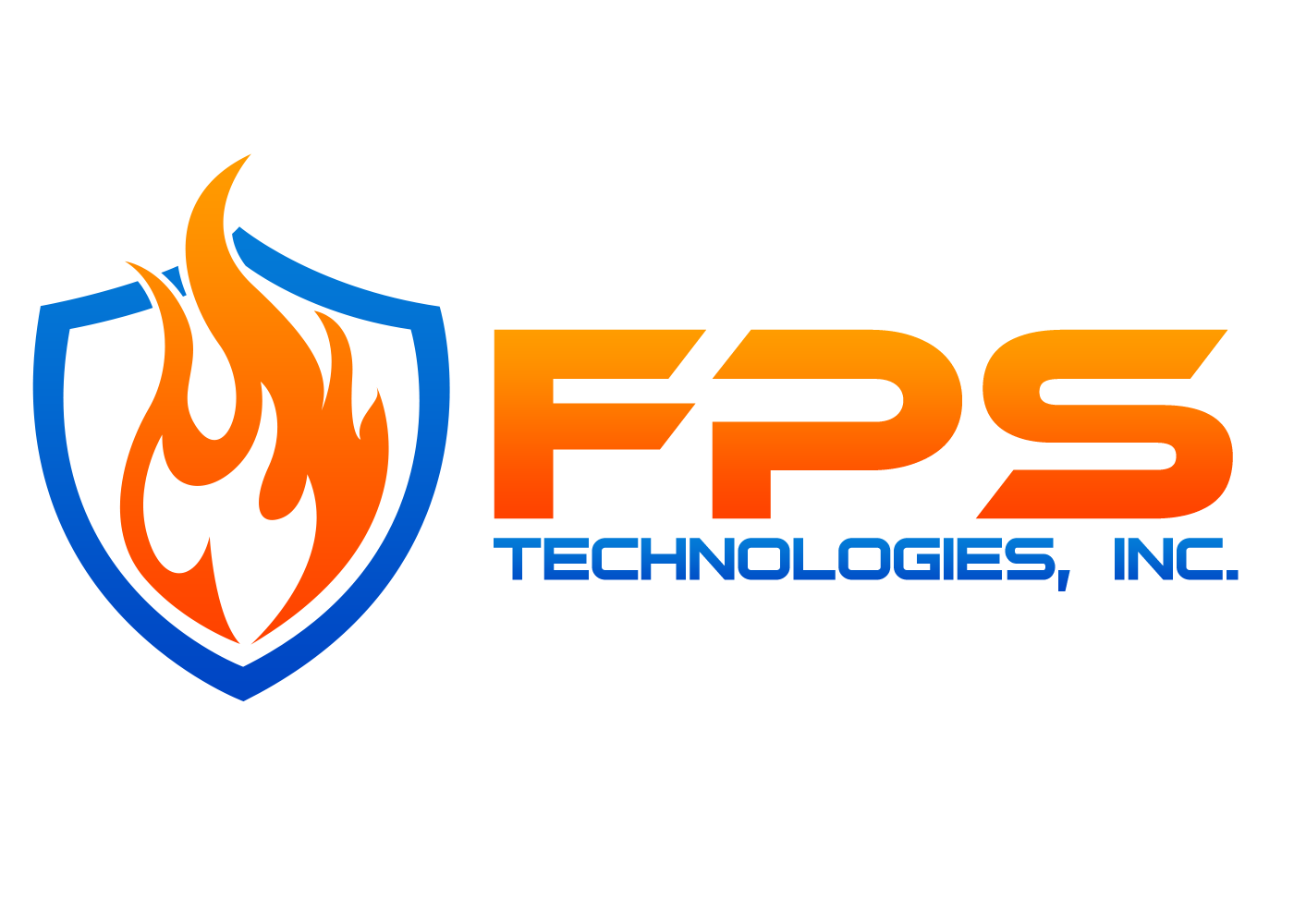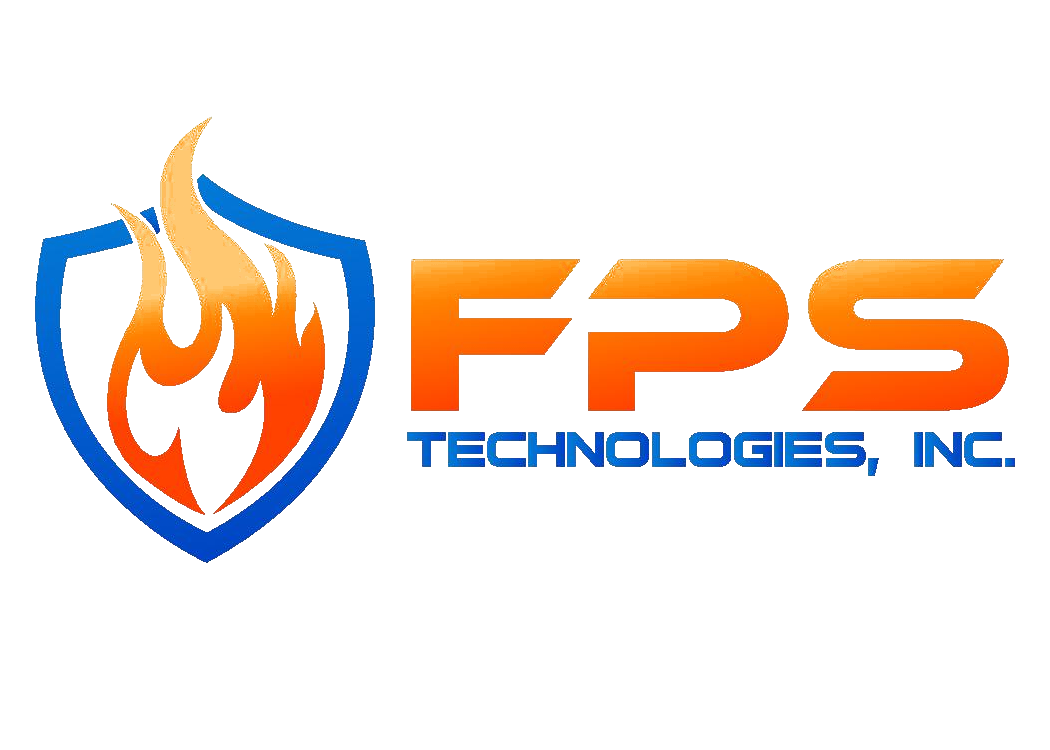Fire hazards are always a potential threat for a building or property owner. Are you keeping your fire risk top of mind? According to the NFPA, fires caused $328.5 billion worth of damages in 2014. If you haven’t already made fire prevention a priority, you should! Investing in a fire protection system could mean the difference between minor damage or a catastrophic, business-ending incident.
What is a sprinkler system?
One of the most common and practical fire containment methods for commercial buildings is a sprinkler system. These systems are a series of overhead pipes ready to distribute water if the system detects a fire. Depending on the type of building you own and the facility's purpose, there are a few different variations of sprinklers that offer additional support catered to your needs.
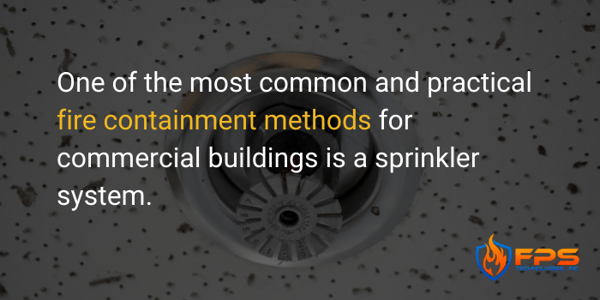
There are many components to a sprinkler system, but there are four main parts: the water source, sprinkler riser, sprinkler piping, and sprinkler head. However, there are many additional features such as the backflow preventer, fire pump, control valves, alarms, test connections, and fire department connection. These systems work seamlessly (when they have regular maintenance) to ensure they alert the relevant parties in an emergency and minimize damage.
What are the different types of sprinkler systems?
- Wet pipe systems are the most common. These systems have water sitting in the pipes at all times, offering instant support if the system detects a fire.
- Dry pipe systems are a great option if your building is cold enough to suffer from freezing pipes. Dry pipes release pressurized air for approximately one minute before water is released, preventing the sprinkler from failing because of the cold environment.
- There are also many types of specific systems, such as pre-action, deluge, foam, mist, and other variants of sprinklers meant to protect particular types of facilities such as electrical plants. It is essential to research which kind of system is best for you as you consider installing sprinklers in your facility. You can also consult a fire prevention specialist, such as FPS, to discuss your needs and options.
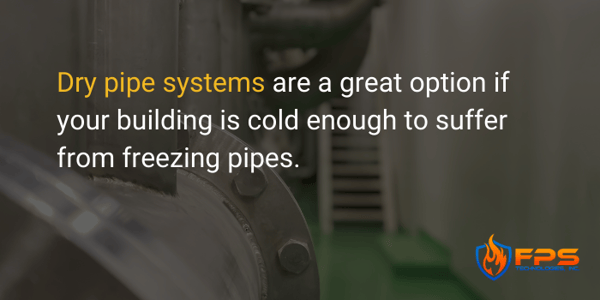
How do protection systems detect a fire?
Sprinkler systems are heat-sensitive, so they automatically activate when temperatures reach a fire-inducing range, typically between 155-165 degrees Fahrenheit. However, the specific temperature can vary depending on your business. For example, restaurant kitchens may set their systems to higher temperatures so they don’t go off during regular operations.
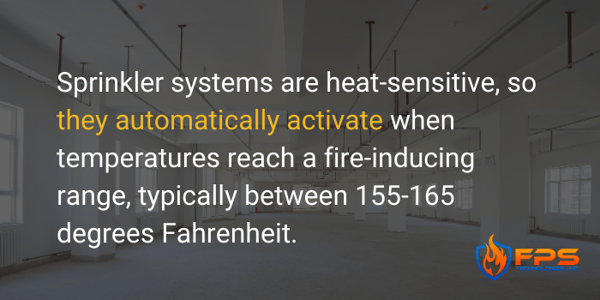
What are the benefits of a sprinkler system?
Investing in a sprinkler system provides many benefits. First, they minimize the risk of injury or death to the employees or patrons of your building. Approximately 15,000 injuries and 3,400 deaths occur each year from fires, so installing a sprinkler system will help prevent those from happening.
While it may seem like the initial cost of a sprinkler system is high, there are several long-term cost savings associated with having one. For example, many insurance companies offer a reduced monthly premium for businesses that have a sprinkler system because it lowers the risk of catastrophic damage. Over time, the premium savings help recoup your initial investment. Additionally, in the event of an emergency, the overall damage will be much less expensive to repair than without a sprinkler system.
If you are debating installing a sprinkler system in your facility, we can assure you that the long term benefits far outweigh the initial cost. It will provide a safer environment for employees and patrons, can lower your insurance costs, and prevents fires from spreading and causing catastrophic, expensive damage to your property. Get in touch with an FPS technician for a free building assessment to discuss your fire needs and which sprinkler system will work best for you.
